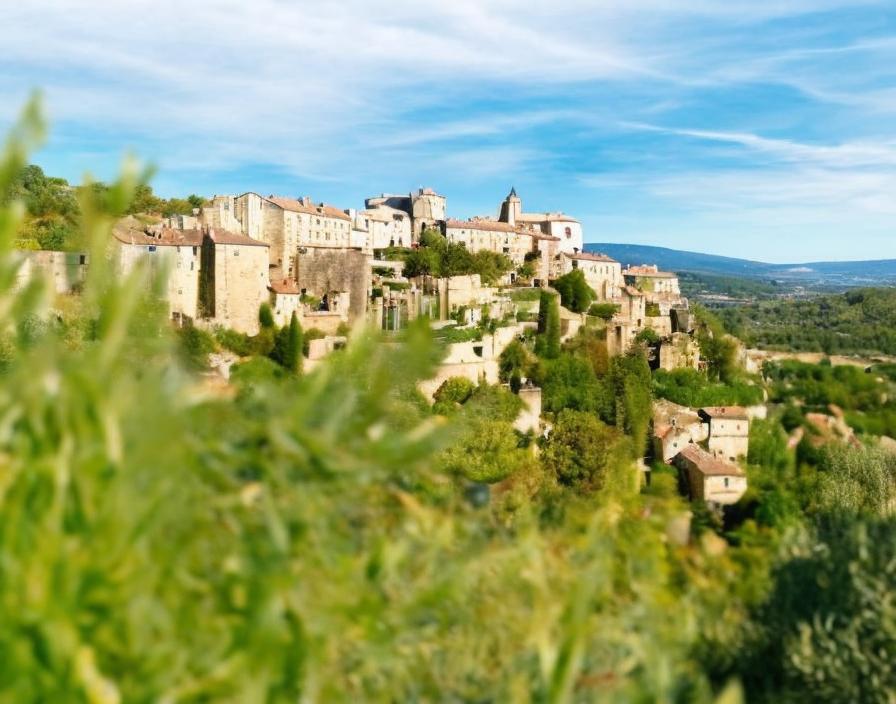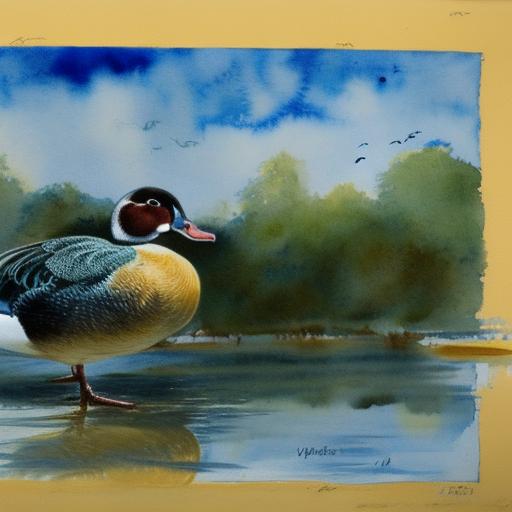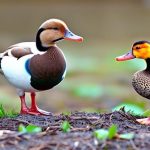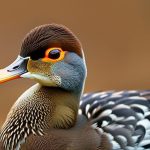French duck breeds are known for their unique characteristics and versatility. These breeds have been developed over centuries to thrive in the French climate and landscape, making them well-suited for various purposes such as meat production, egg-laying, and even as ornamental birds. French duck breeds are highly valued for their rich flavor, tender meat, and high egg production, making them a popular choice for both small-scale and commercial farmers. With their distinctive appearances and strong genetic traits, French duck breeds have gained recognition and admiration from poultry enthusiasts around the world.
Key Takeaways
- French duck breeds are known for their unique characteristics and are popular for their meat and eggs.
- The history and origin of French duck breeds can be traced back to ancient times, with a rich heritage and cultural significance.
- French duck breeds are known for their distinctive physical features, including their plumage, size, and temperament.
- Some popular French duck breeds include the Muscovy, Rouen, and Pekin, each with its own unique qualities and uses.
- French duck breeds are used for various purposes, including meat production, egg laying, and conservation efforts to preserve their genetic diversity.
History and Origin of French Duck Breeds
The history of French duck breeds dates back to ancient times when ducks were domesticated for their meat, eggs, and feathers. Over the centuries, French farmers selectively bred ducks to develop specific traits that would make them well-adapted to the local environment and suitable for various agricultural purposes. The development of French duck breeds was influenced by factors such as regional climate, available resources, and the demand for specific products. As a result, different regions in France have their own unique duck breeds that have been carefully bred to meet the needs of local farmers. The rich history and heritage of French duck breeds have contributed to their enduring popularity and significance in the poultry industry.
Characteristics and Physical Features of French Duck Breeds
French duck breeds are known for their distinct physical features and characteristics that set them apart from other duck breeds. These breeds typically have a medium to large build with a broad chest, sturdy legs, and a slightly elongated body. Their plumage comes in a variety of colors, including white, black, blue, and fawn, adding to their visual appeal. French duck breeds are also recognized for their strong and resilient nature, making them well-suited for free-range farming and outdoor environments. In addition, these breeds are known for their excellent foraging abilities, which allows them to thrive on a diverse diet of insects, plants, and grains. Overall, the physical features and characteristics of French duck breeds make them valuable assets for sustainable agriculture and small-scale farming.
French duck breeds are known for their distinct physical features and characteristics that set them apart from other duck breeds. These breeds typically have a medium to large build with a broad chest, sturdy legs, and a slightly elongated body. Their plumage comes in a variety of colors, including white, black, blue, and fawn, adding to their visual appeal. French duck breeds are also recognized for their strong and resilient nature, making them well-suited for free-range farming and outdoor environments. In addition, these breeds are known for their excellent foraging abilities, which allows them to thrive on a diverse diet of insects, plants, and grains. Overall, the physical features and characteristics of French duck breeds make them valuable assets for sustainable agriculture and small-scale farming.
Popular French Duck Breeds
Several French duck breeds have gained popularity both within France and internationally due to their unique qualities and versatility. The most well-known French duck breed is the Rouen, which is prized for its large size, rapid growth rate, and flavorful meat. Another popular breed is the Muscovy duck, which is recognized for its distinctive appearance, lean meat, and quiet demeanor. The Pekin duck is also a widely favored breed known for its high egg production, fast growth, and adaptability to various climates. Other notable French duck breeds include the Saxony, Silver Appleyard, and Blue Swedish, each with its own set of desirable traits that make them valuable additions to any poultry farm.
Uses and Purposes of French Duck Breeds
French duck breeds are valued for their diverse uses and purposes in agriculture and culinary traditions. These breeds are primarily raised for meat production due to their flavorful and tender meat that is highly sought after by chefs and consumers alike. In addition to meat production, French duck breeds are also prized for their high egg-laying capabilities, providing a consistent supply of eggs for culinary use or hatching purposes. Furthermore, some French duck breeds are kept for ornamental purposes due to their striking appearances and unique plumage patterns. The versatility of French duck breeds makes them valuable assets for small-scale farmers, homesteaders, and commercial operations seeking sustainable and multifunctional livestock options.
French duck breeds are valued for their diverse uses and purposes in agriculture and culinary traditions. These breeds are primarily raised for meat production due to their flavorful and tender meat that is highly sought after by chefs and consumers alike. In addition to meat production, French duck breeds are also prized for their high egg-laying capabilities, providing a consistent supply of eggs for culinary use or hatching purposes. Furthermore, some French duck breeds are kept for ornamental purposes due to their striking appearances and unique plumage patterns. The versatility of French duck breeds makes them valuable assets for small-scale farmers, homesteaders, and commercial operations seeking sustainable and multifunctional livestock options.
Conservation and Preservation Efforts for French Duck Breeds

Conservation and preservation efforts play a crucial role in safeguarding the genetic diversity and heritage of French duck breeds. Various organizations and breeders in France are dedicated to preserving rare and endangered duck breeds through breeding programs, genetic research, and public awareness initiatives. These efforts aim to maintain the unique traits and characteristics of French duck breeds while ensuring their long-term viability in the face of modern agricultural practices and industrialization. Additionally, international collaborations with poultry conservation groups contribute to the global conservation of French duck breeds, raising awareness about the importance of preserving these valuable genetic resources for future generations.
Conservation and preservation efforts play a crucial role in safeguarding the genetic diversity and heritage of French duck breeds. Various organizations and breeders in France are dedicated to preserving rare and endangered duck breeds through breeding programs, genetic research, and public awareness initiatives. These efforts aim to maintain the unique traits and characteristics of French duck breeds while ensuring their long-term viability in the face of modern agricultural practices and industrialization. Additionally, international collaborations with poultry conservation groups contribute to the global conservation of French duck breeds, raising awareness about the importance of preserving these valuable genetic resources for future generations.
Conclusion and Future of French Duck Breeds
In conclusion, French duck breeds hold a significant place in the poultry industry due to their rich history, diverse uses, and distinctive characteristics. As global interest in sustainable agriculture and heritage livestock breeds continues to grow, the future of French duck breeds looks promising with ongoing conservation efforts and increased recognition of their value in modern farming practices. By preserving the genetic diversity of French duck breeds and promoting their unique qualities, these breeds can continue to thrive as valuable assets for small-scale farmers, culinary enthusiasts, and conservationists alike. With continued support from dedicated breeders, organizations, and consumers, the legacy of French duck breeds will endure for generations to come.
If you’re interested in learning more about French duck breeds, you might also want to check out an article on PoultryWizard.com that discusses the benefits of renting a chicken coop. This article provides valuable insights into the practical aspects of raising poultry and could offer some useful tips for anyone considering adding French ducks to their flock. Renting a Chicken Coop can be a great way to start your journey into poultry farming and could be particularly helpful for those looking to expand their knowledge beyond just duck breeds.
FAQs
What are the different French duck breeds?
There are several French duck breeds, including the Rouen, the Muscovy, the Pekin, the Saxony, and the Blue Swedish.
What are the characteristics of French duck breeds?
French duck breeds are known for their hardiness, good foraging abilities, and excellent meat quality. They also come in a variety of colors and patterns.
What are the uses of French duck breeds?
French duck breeds are primarily used for meat production, as well as for their eggs and feathers. They are also popular for exhibition and ornamental purposes.
How do you care for French duck breeds?
Caring for French duck breeds involves providing them with a suitable living environment, a balanced diet, and regular access to water for swimming and foraging. They also require protection from predators and proper healthcare.
Are French duck breeds suitable for beginners?
French duck breeds can be suitable for beginners, as they are generally easy to care for and can adapt well to different environments. However, proper research and preparation are still necessary before raising them.
Meet Walter, the feathered-friend fanatic of Florida! Nestled in the sunshine state, Walter struts through life with his feathered companions, clucking his way to happiness. With a coop that’s fancier than a five-star hotel, he’s the Don Juan of the chicken world. When he’s not teaching his hens to do the cha-cha, you’ll find him in a heated debate with his prized rooster, Sir Clucks-a-Lot. Walter’s poultry passion is no yolk; he’s the sunny-side-up guy you never knew you needed in your flock of friends!







